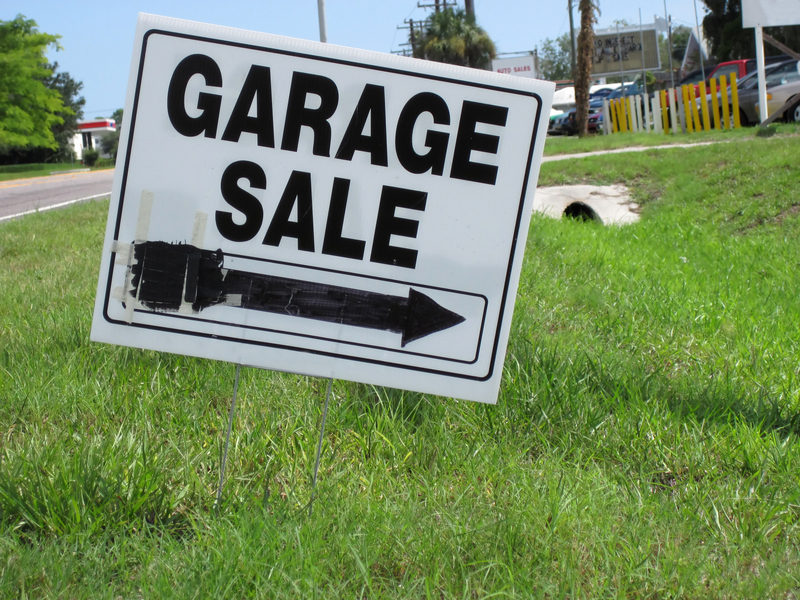Smart Strategies for Cutting Costs on Bulky Waste Items
Are you looking for effective ways to save money on the disposal of large household items or bulky waste articles? The disposal of furniture, appliances, mattresses, and other big items can be both costly and stressful. Fortunately, with a bit of planning and some clever tactics, you can significantly cut costs on bulky waste removal and feel good about your environmental impact as well.

Understanding Bulky Waste: What Qualifies?
Before diving into cost-cutting measures, it's important to clarify what is meant by bulky waste items. Generally, these refer to objects too large for regular trash collection or too cumbersome for standard recycling. Common examples include:
- Sofas, armchairs, and couches
- Beds and mattresses
- Large household appliances (refrigerators, washing machines, ovens)
- Carpets and rugs
- Large toys, bikes, or exercise equipment
- Desks, tables, and bookshelves
- Yard waste such as logs and branches (in some localities)
Such items require special methods of disposal, which can incur extra fees if not managed wisely. Let's explore innovative strategies for reducing your costs and handling these items responsibly.
Planning is the Key to Cheap Bulky Waste Disposal
1. Assess and Sort All Bulky Items
Start with a thorough assessment of your bulky trash and large items. Are they still usable, broken, or somewhere in-between? Sorting items into three categories--usable, recyclable, and needing disposal--will help you decide the best and most cost-effective removal option for each.
- Usable items may be sold, donated, or given away.
- Recyclable bulky items can sometimes go through specialized recycling programs.
- Items needing disposal can be minimized by separating components (metal, wood, electronics) for individual recycling.
2. Schedule and Combine Pickups
Combining several items in one collection saves both time and money. Many city or municipal bulky waste services charge per pick-up or for each scheduled trip. Batching your items ensures you pay a single consolidated fee. Coordinate with neighbors or your local community--perhaps others on your street also need to get rid of large unwanted goods, making a group pickup more economical.
Budget-Friendly Bulky Waste Disposal Options
3. Tap Into Local Government and Council Services
Many municipalities offer free or subsidized bulky item pickup services for households, either annually or by appointment. Check your city or county's website for details. Some even provide a list of acceptable bulky items and occasional "large waste collection days" when residents can dispose of items at no cost.
- Tip: Book your slot early during peak moving or cleaning periods to avoid delays and disappointment.
4. Donate or Give Away Good Condition Items
Charities, shelters, non-profits, and thrift organizations often accept large furniture and appliances that are still in usable condition. This not only prevents landfill waste but can shave removal costs to zero--many will come and collect the items for free.
- Contact local charities such as Habitat for Humanity, Goodwill, or local churches and shelters.
- List items on Freecycle, Facebook Marketplace, or Craigslist's free section--someone else may collect and reuse your item.
- Consider local community groups or neighborhood apps.
By donating, you may also get tax deductions (check eligibility in your area).
5. Upcycle, Repurpose, or Dismantle Bulky Items
Before arranging for disposal, consider whether parts of your bulky waste items can be reused or repurposed. Upcycling not only saves disposal costs but can provide you with new usable goods or art projects.
- Turn an old bed frame into a garden bench.
- Use wood from broken furniture for a DIY home project.
- Repurpose parts of large appliances as storage units, planters, or workshop equipment.
For non-repairable items, dismantle them and sort materials for recycling--metal, wood, plastic, or electronics. This can sometimes allow you to access free drop-off programs at local recycling facilities.
6. Sell Bulky Items Online
List large but useable items on online classifieds. Platforms like Facebook Marketplace, eBay, OfferUp, Gumtree, and Nextdoor are popular for local buyers searching for deals on second-hand furniture or appliances. As the buyer typically picks up, you avoid transport and disposal fees entirely.
- Be honest about the condition and provide accurate photographs.
- If you're in a hurry, offer a lower price for quick pickup.
Comparing Private Bulky Waste Removal Services
7. Get Multiple Quotes & Compare Options
If you must use a private junk removal or bulky item disposal company, don't accept the first quote. Rates vary substantially:
- Some companies charge by item, others by truckload or time spent on-site.
- Look for bundled deals or discounts for multiple item pickups.
- Check reviews and ask for price breakdowns--hidden fees add up fast!
Be wary of companies that do not provide clear pricing or cannot guarantee responsible disposal.
8. Consider Renting a Skip (Dumpster) with Shared Use
If you or your building need to get rid of many large items, hiring a skip (also known as a dumpster) can be cost-effective. Do your research:
- Share the dumpster with neighbors or other tenants to divide costs.
- Make sure the size and rental period fit your needs--get only as big as you need.
- Check for restrictions (e.g., mattresses, electronics, or hazardous waste are often forbidden).
Some companies offer mini-skips at lower rates plus pickup and recycling services.
Additional Tips for Minimizing Bulky Waste Disposal Costs
9. Take Advantage of Manufacturer or Retailer Take-back Programs
Many large retailers and manufacturers now offer take-back or recycling programs for old furniture and appliances--particularly when you purchase a new item. Some will remove your old refrigerator, mattress, or couch on delivery of the replacement for a small or even no fee.
- Ask about take-back policies before making a purchase.
- Some electronics stores or mattress companies provide this service for free or as part of a delivery package.
10. Use Free or Low-Cost Community Drop-Off Days
Many towns host annual or seasonal curbside pickup or "clean-out" events where residents can dispose of oversized waste items at little to no cost. These are usually announced via mail, community newsletters, or municipal websites.
- Plan your cleanup to coincide with these dates.
- Prepare your items in advance as slots fill up quickly.
11. Rent or Borrow a Truck for DIY Drop-Offs
If you have multiple bulky items and there is a local landfill or recycling center nearby, consider renting or borrowing a truck or trailer for a single large haul. Many transfer stations charge less per individual drop-off than pickup services, especially if items are sorted for recycling in advance.
- Car-share or split costs with neighbors if possible.
- Be prepared for loading/unloading and any recycling fees based on item type.
Environmental and Legal Considerations
12. Avoid Illegal Dumping--It's Costlier!
Improperly disposing of bulky waste can result in hefty fines and community complaints. Abandoned items often become an eyesore or a hazard. Always use authorized disposal methods and check local regulations.
13. Stay Updated with Local Recycling Regulations
Not all bulky items are permitted in regular landfills. Some appliances contain refrigerants or other hazardous materials requiring special handling. Electronics (e-waste) are increasingly covered by extended producer responsibility programs. Review your municipality's waste management guidelines to ensure responsible and cost-efficient disposal.

Planning Ahead: Reducing Bulky Waste Generation
Cutting costs is easier when you generate less waste in the first place. Here's how you can make a difference:
- Buy quality, long-lasting items that are less likely to break or need replacement.
- Choose modular furniture--easier to move, sell, or upcycle.
- Rent or borrow infrequently used items (exercise equipment, spare beds).
- Prioritize repair or refurbishment before replacing major items.
- Ask retailers about trade-in or take-back programs when considering new purchases.
Summary: The Best Money-Saving Approaches for Bulky Waste
- Plan and batch disposals for maximum savings.
- Donate or sell usable items instead of discarding them.
- Use municipal free pickup days and drop-off events whenever possible.
- Get multiple quotes from private services and compare carefully.
- Consider DIY drop-offs for large loads or share costs with neighbors.
- Always comply with local regulations to avoid fines and penalties.
Final Thoughts
Efficient bulky waste management doesn't have to be expensive. By making use of free resources, seeking out community options, and thinking creatively about reuse and recycling, you can significantly cut costs linked to disposing of large household items. These smart strategies for cutting costs on bulky waste items not only save you money but also help reduce landfill waste and support a more sustainable environment.
*Ready to dispose of that worn-out sofa, broken fridge, or pile of unwanted furniture? Put these cost-cutting strategies to work, and you'll lighten your load--for both your wallet and the planet!*